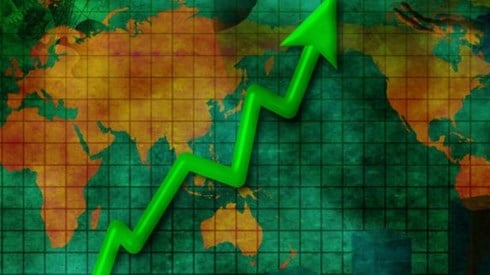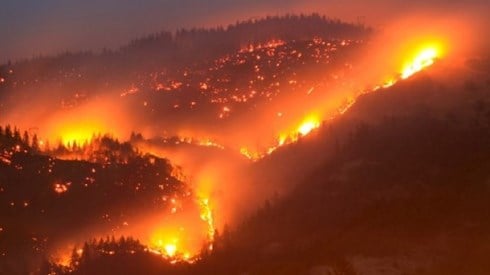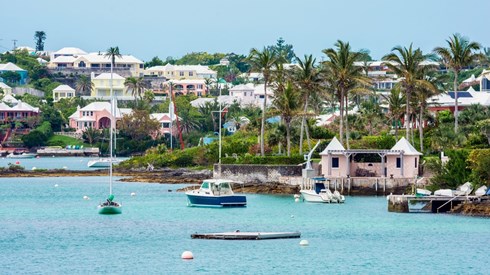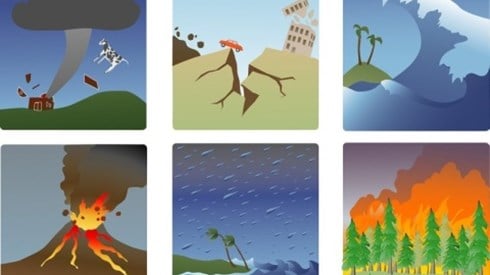Insured Global Catastrophe Losses Down at $56 Billion in 2019
December 20, 2019
In its latest sigma findings, Swiss Re said total economic losses from natural and human-made catastrophes fell to around $140 billion in 2019 from $176 billion last year. Global insured losses are estimated to be around $56 billion, down from $93 billion in 2018 and below the annual average ($75 billion) of the previous 10 years.
Tropical cyclone activity in the second half of 2019 pushed overall insurance losses higher after a benign first half of the year. Also, as in recent years, a number of smaller and mid-sized loss-generating disaster events (so-called secondary perils) accounted for more than 50 percent of the insured losses.
Natural catastrophes accounted for $133 billion of this year's global economic losses, while the remaining $7 billion arose from human-made disasters. Insured losses from natural catastrophes fell to $50 billion from $84 billion in 2018. Insured losses from human-made disasters declined to $6 billion from $9 billion.
Losses Driven Higher by Tropical Cyclones
Tropical cyclones inflicted devastation in different parts of the world. In the first half of the year, Cyclones Idai and Kenneth in Mozambique and neighboring countries and Cyclone Fani in India left trails of destruction and suffering to local communities. Insured claims were very low, given the low insurance penetration in the impacted regions.
In the second half of 2019, the Bahamas and North Carolina were hit by Hurricane Dorian, which caused insured losses of about $4.5 billion. Japan was hit by two devastating typhoons within a short period. In mid-September, Typhoon Faxai hit the Kanto region that includes the Greater Tokyo Area, with associated insured losses estimated to be approximately $7 billion. Soon after, in early October, Typhoon Hagibis struck the same region, causing further widespread damage across Japan. Total insured losses from Hagibis are estimated to be around $8 billion.
After some years of relative calm, the experience of the last 2 years reaffirms that typhoon risk remains a major vulnerability for Japan. Faxai and Hagibis followed Typhoon Jebi in 2018, which resulted in substantial insurance losses of close to $13 billion. This year's typhoons further underscore the high exposure of urban regions in Japan to both typhoon wind and flood risks in spite of the presence of mitigation infrastructure. While climate change cannot be ruled out as an amplifying risk factor, it is certain that the last three events confirm the historical pattern of devastating Japanese typhoons in the middle of the 20th century.
Secondary Perils Devastating as Ever: Climate Change Taking Its Toll
This year also saw heatwaves and dry spells, with new temperature highs recorded in several locations around the world, from Europe to Australia. Devastating wildfires affected Australia, Indonesia, the United States, Canada, the Amazon region, and Siberia, among others.
Once again, there were devastating floods in many regions in 2019. Severe monsoon rains led to extensive flooding in India, Bangladesh, and Nepal, and there were repeated flood events in other regions, including China, the United States, Europe, Canada, and Australia. Thunderstorms and hailstorms have caused damage to property, vehicles, and agriculture in many parts of the world. Together, secondary perils are estimated to comprise more than 50 percent of this year's global insured losses from natural catastrophes, demonstrating once again the very significant impact these events can inflict on societies.
Climate change is leading to more frequent and severe secondary peril events, which manifest in different ways: more local flooding, torrential rains, prolonged drought, severe wildfires, and other extreme weather events.
"There is more scientific evidence that climate change impacts the frequency and severity of secondary peril events today, warranting more focus for research. For primary perils like typhoons, science is far less conclusive," said Martin Bertogg, head of catastrophe perils at the Swiss Re Institute. "In addition, macro risk factors like rapidly growing populations and property values in exposed areas contribute to the increase in losses resulting from natural catastrophes globally, making past experience a less definite predictor for future losses."
Swiss Re advises that aforementioned loss estimates are preliminary and may be subject to change, as not all loss-generating events have been fully assessed yet.
Total Economic and Insured Losses in 2019 and 2018
Catastrophe-Related Insured Losses (1970–2019)
December 20, 2019





